
To save Mono Lake from ecological collapse due to excessive water diversions, a young group of scientists formed the Mono Lake Committee and pursued legal, legislative, and grassroots advocacy strategies on the lake’s behalf.
It took contributions of many people and years of persistence to get water flowing back down the streams and into Mono Lake the way it does now. And yet the work is far from over, and the effort to keep saving Mono Lake continues today.
Water diversions almost destroyed Mono Lake
In 1941, the Los Angeles Department of Water & Power (DWP) began diverting water from Mono Lake’s tributary streams, sending it 350 miles south to meet the growing water demands of Los Angeles.
As a result, over the next 40 years Mono Lake dropped by 45 vertical feet, lost half its volume, and doubled in salinity. A landbridge formed to islands that had previously been a safe nesting area for thousands of California Gulls, allowing predators to reach eggs and chicks. Air quality degraded as toxic dust blew off of the dry lakebed exposed by the falling lake.
Students to the rescue
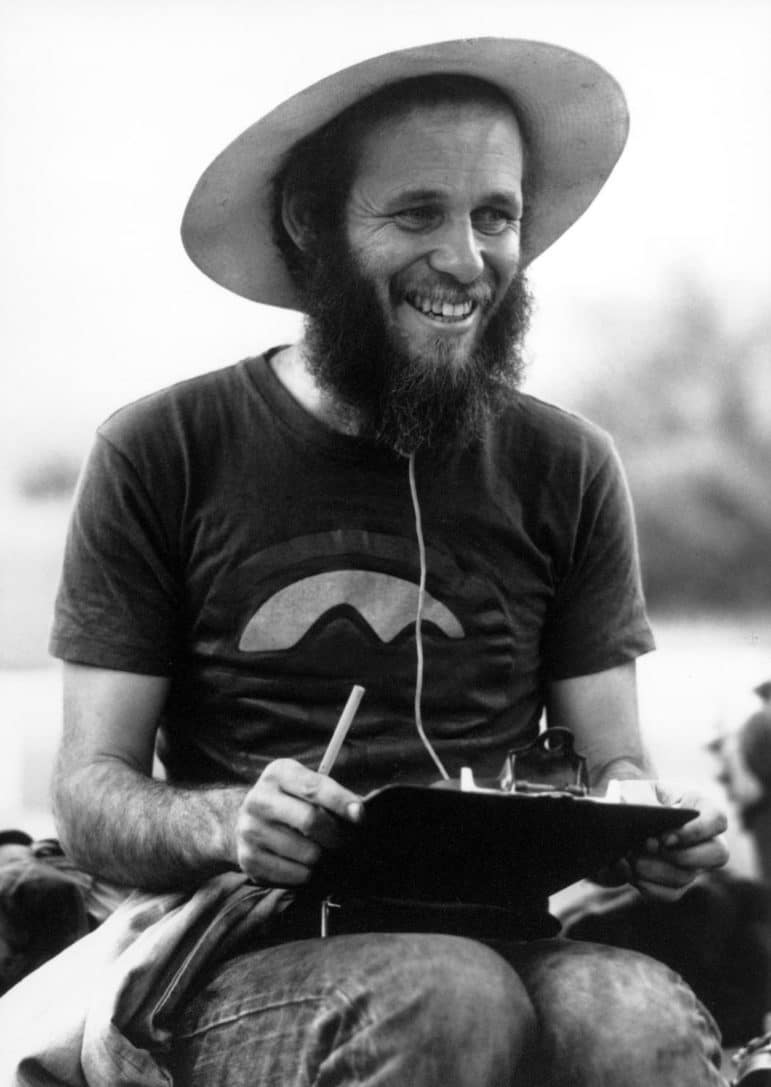
In 1976, a group of students from UC Davis and Stanford conducted the first comprehensive ecological study of Mono Lake. They found that the lake supported abundant life, from brine shrimp to birds, but also that if the water diversions continued, its ecological collapse seemed inevitable.
Appalled by that prospect, members of the group—David Gaines, Sally Gaines (nee Judy), and others—founded the Mono Lake Committee in 1978 to try to save Mono Lake.
Pictured: David Gaines, one of the founders of the Mono Lake Committee. Mono Lake Committee photo.
Founding the Mono Lake Committee
They began traveling around California, presenting a slide show about Mono Lake to schools, conservation groups, legislators, service organizations, and anyone else who would listen. They bought a storefront in Lee Vining to serve as an office, and the Mono Lake Committee Information Center & Bookstore opened on Memorial Day weekend in 1979 (it’s still our headquarters today).


As the Mono Lake Committee got organized, they built on their grassroots origins, eventually growing to 20,000 members strong. They pursued a three-part plan of action for Mono Lake: legal, legislative, and public outreach.
Public Trust lawsuit against DWP
In 1979, the Mono Lake Committee and the National Audubon Society sued DWP, arguing that water diversions to Los Angeles did not comply with the Public Trust doctrine. This legal doctrine, which came to California law from ancient Roman law, holds that the government has a duty to protect navigable bodies of water for the use and benefit of all people.
THE PUBLIC TRUST
The Public Trust decision set an important precedent for protecting the environment.
In a 1983 precedent-setting decision, the California Supreme Court agreed with the Mono Lake Committee, ruling that the state has an obligation to protect places such as Mono Lake, “as far as feasible,” even if this means reconsidering established water rights.
The fledgling, grassroots Mono Lake Committee had taken the largest water utility in the country to court—and won. With David Gaines as the Executive Director at the time, the press capitalized on this modern-day “David and Goliath” story, and Mono Lake gained international interest.
“The public trust … is an affirmation of the duty of the state to protect the people’s common heritage of streams, lakes, marshlands and tidelands…”
—Supreme Court of California, 1983
Fish & Game code lawsuits against DWP
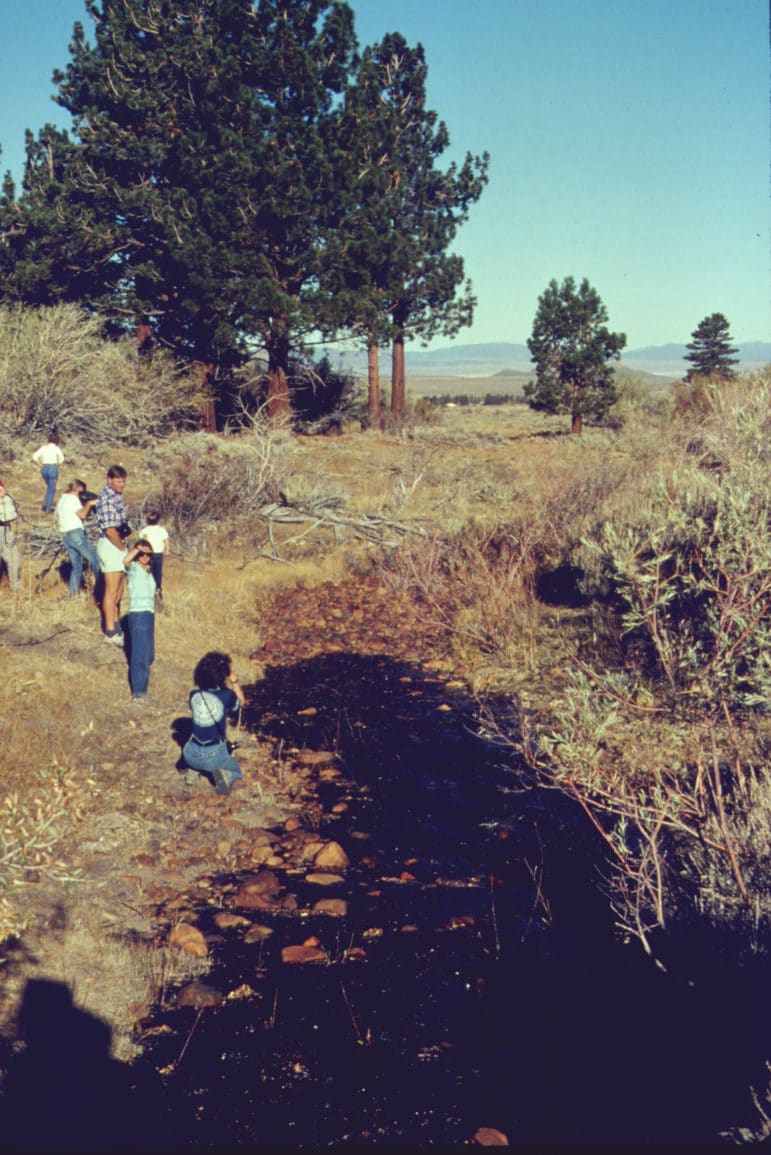
In 1984, the Committee, California Trout, and the National Audubon Society sued DWP again, this time to protect Mono Lake’s tributary streams.
They argued that DWP’s water diversions did not comply with the California Department of Fish & Game code, sections 5937 and 5946, which say, “the owner of any dam shall allow sufficient water at all times to pass over, around, or through the dam, to keep in good condition any fish that may be planted or exist below the dam.”
This lawsuit was the first of eight in the 1980s that successfully challenged DWP’s water diversions using the Fish & Game codes. Because of these cases, water began flowing down the Mono Basin streams’ dry channels and into Mono Lake for the first time since the 1940s.
Pictured: Parker Creek, one of Mono Lake’s smaller tributary streams, finally got rewatered in the 1980s after being dry for more than forty years. Mono Lake Committee photo.
State Water Board Decision 1631
Eventually the Public Trust and Fish & Game lawsuits were sent to the State Water Resources Control Board, the agency that allocates water in California, for enforcement details to be hammered out.
After 43 days of hearings with evidence presented by expert witnesses and testimony from the public, the State Water Board issued Decision 1631 on September 28, 1994. Hearing officer Marc Del Piero remarked, “today is the day we saved Mono Lake.”
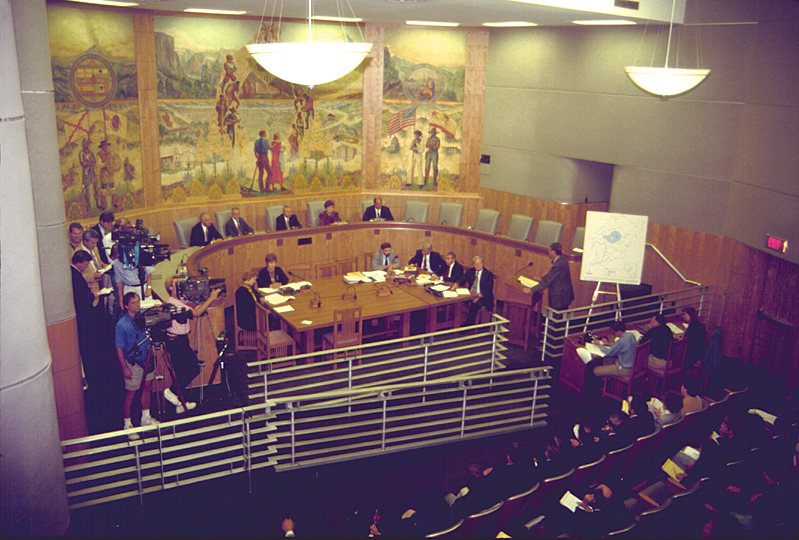
Decision 1631 set a lake level of 6392 feet to protect Mono Lake’s public trust values, required permanent streamflows for Mono Basin streams, and ordered DWP to restore streams and waterfowl habitat damaged as a result of diversions. No party appealed the decision.
Special designations to protect Mono Lake
While the lawsuits were winding their way through the courts, the Mono Lake Committee also pursued legislation to further protect Mono Lake with a State Park and a National Forest designation.
The Mono Lake Tufa State Natural Reserve was created in 1981 and the Mono Basin National Forest Scenic Area was established in 1984. These two designations brought resources, facilities, and attention to the Mono Basin and both became involved in the litigation to protect Mono Lake.
Mono Lake is also a site in the Western Hemisphere Shorebird Reserve Network, international recognition that the Mono Lake Committee helped achieve.
Replacement water for Los Angeles
After relying for decades on water imported to Los Angeles from other areas, DWP frequently argued that if it was forced to let water stay at Mono Lake it would look elsewhere to make up the difference.
The Mono Lake Committee disagreed with that idea on principle and set about securing environmentally sound replacement water supplies that would meet LA’s real water needs without transferring the problem somewhere else. As a direct result of the Committee’s efforts, state and federal governments provided LA millions of dollars to build water reclamation plants and fund water conservation efforts.
One of the most successful conservation programs was started by the community group, Mothers of East LA-Santa Isabel, who did the work of installing free ultra-low-flush toilets for LA residents. The wildly successful program replaced 90% of the city’s water-wasting toilets by 2006.
Mothers of East LA-Santa Isabel traveled to Mono Lake, physically connecting community youth participating in the water conservation program by bringing them to Mono Lake to see the remarkable place they were protecting. That was the beginning of the Mono Basin Outdoor Education Center (OEC), which still connects inner-city youth with the source of their water through week-long adventures at Mono Lake; 2024 is the OEC’s 30th year of operation.
Over time the water ethic in Los Angeles has changed. Los Angeles has become one of the most water-conscious cities in the world. Conservation and recycling generate more water annually than was ever diverted from the Mono Basin—proof that there is enough water for people and for Mono Lake.
OUR MISSION
It’s part of our mission that we don’t transfer environmental problems to other areas. Read it here.
Restoring Mono Basin streams
In 1998, the State Water Board issued two restoration orders, 98-05 and 98-07, which required DWP to implement a restoration plan for the Mono Basin’s streams and waterfowl habitat, both damaged by decades of excessive water diversions.
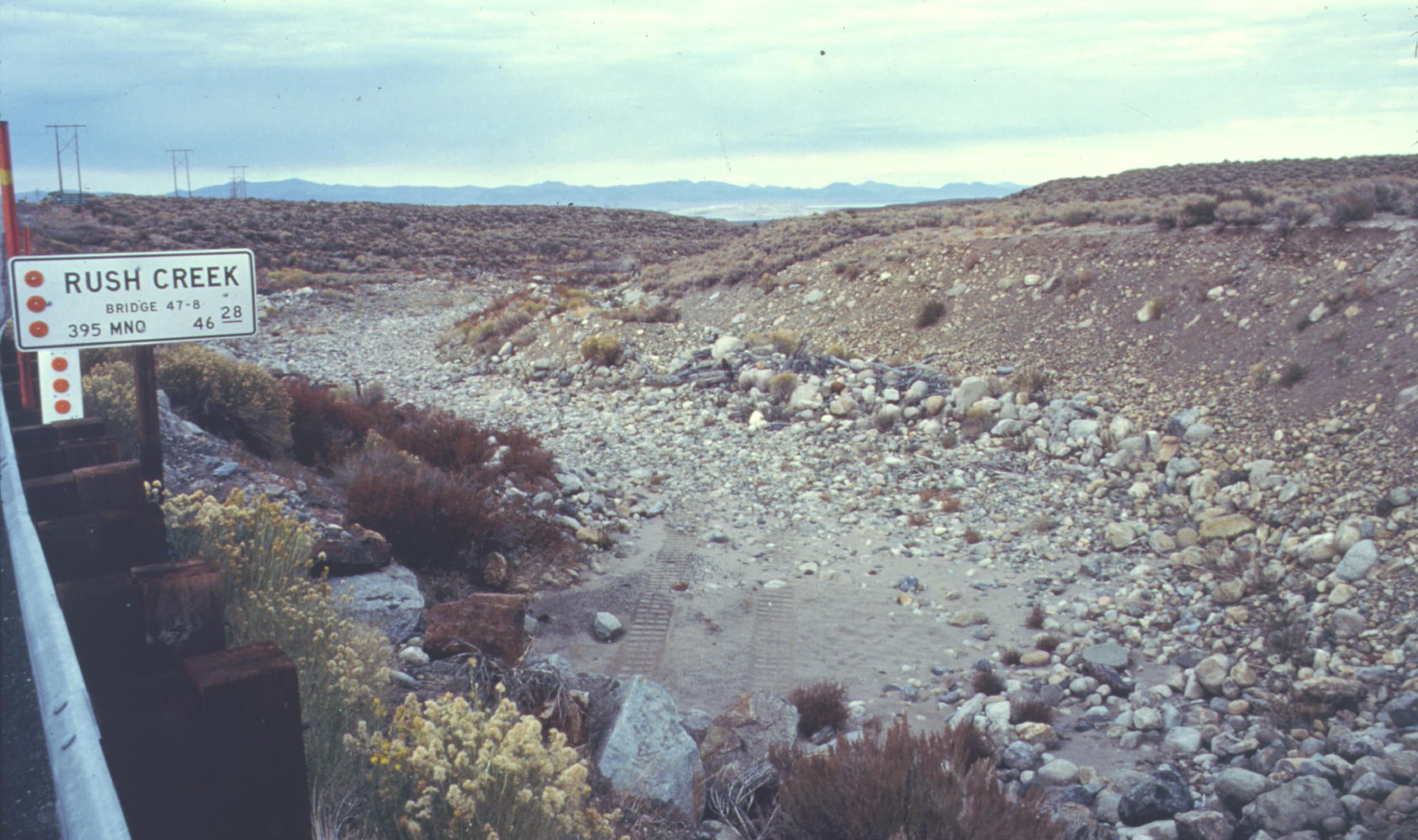
To restore waterfowl habitat, Orders 98-05 and 98-07 mandated raising Mono Lake to 6392 feet and improving existing freshwater ponds for migrating birds. The orders specified stream restoration measures such as implementing streamflow patterns based on the natural hydrograph to achieve “functional and self-sustaining stream systems with healthy riparian ecosystem components” and “trout in good condition.”
The orders also launched a decade-long scientific study and monitoring program to determine the optimal restoration flows for Rush Creek and Lee Vining Creek. Independent Stream Scientists appointed by the State Water Board carried out the study, holding twice-yearly restoration meetings with all interested parties, including the Mono Lake Committee.
In 2010, the stream scientists produced the result of their 12-year monitoring program and analyses, including their restoration recommendations. In their report, the Synthesis of Instream Flow Recommendations, they called for changes to the way DWP operated to ensure that the streams would truly be restored, with guidelines for monitoring that progress.
Mono Basin Stream Restoration Agreement
After DWP objected to the recommendations made in the Synthesis Report, the State Water Board directed DWP, the Mono Lake Committee, California Trout, and the California Department of Fish & Wildlife to resolve disputes about the feasibility of implementing the recommendations. The group worked together intensively for three years.
In 2013 the Mono Basin Stream Restoration Agreement was submitted to the State Water Board, signed by all parties, and approved by the DWP Board of Commissioners. The Mono Lake Committee organized a celebration to mark the occasion, attended by DWP officials, all Agreement parties, and many dedicated Mono Lake Committee members.
The State Water Board was set to issue a new water license to DWP that incorporated the Stream Restoration Agreement’s provisions, but despite having signed the Agreement, DWP balked. Since 2014, DWP has delayed the license process at every turn, preventing Mono Lake’s tributary streams from receiving the restoration they still need.
Keep saving Mono Lake
The Mono Lake Committee was founded out of a love for Mono Lake and concern for its future as a unique ecosystem, an important site for birds, and a place loved by so many people.
The work continues today. We safeguard the landmark protections achieved in court and at the State Water Board, make sure restoration proceeds to heal the streams and bring the lake to the management level, and protect this place from new threats like inappropriate development projects, shrinking agency budgets, and climate change.
Since our founding in 1978, we have been the only organization dedicated to Mono Lake and the Mono Basin. After more than 40 years of protecting this remarkable place for future generations, we plan to keep saving Mono Lake forever.
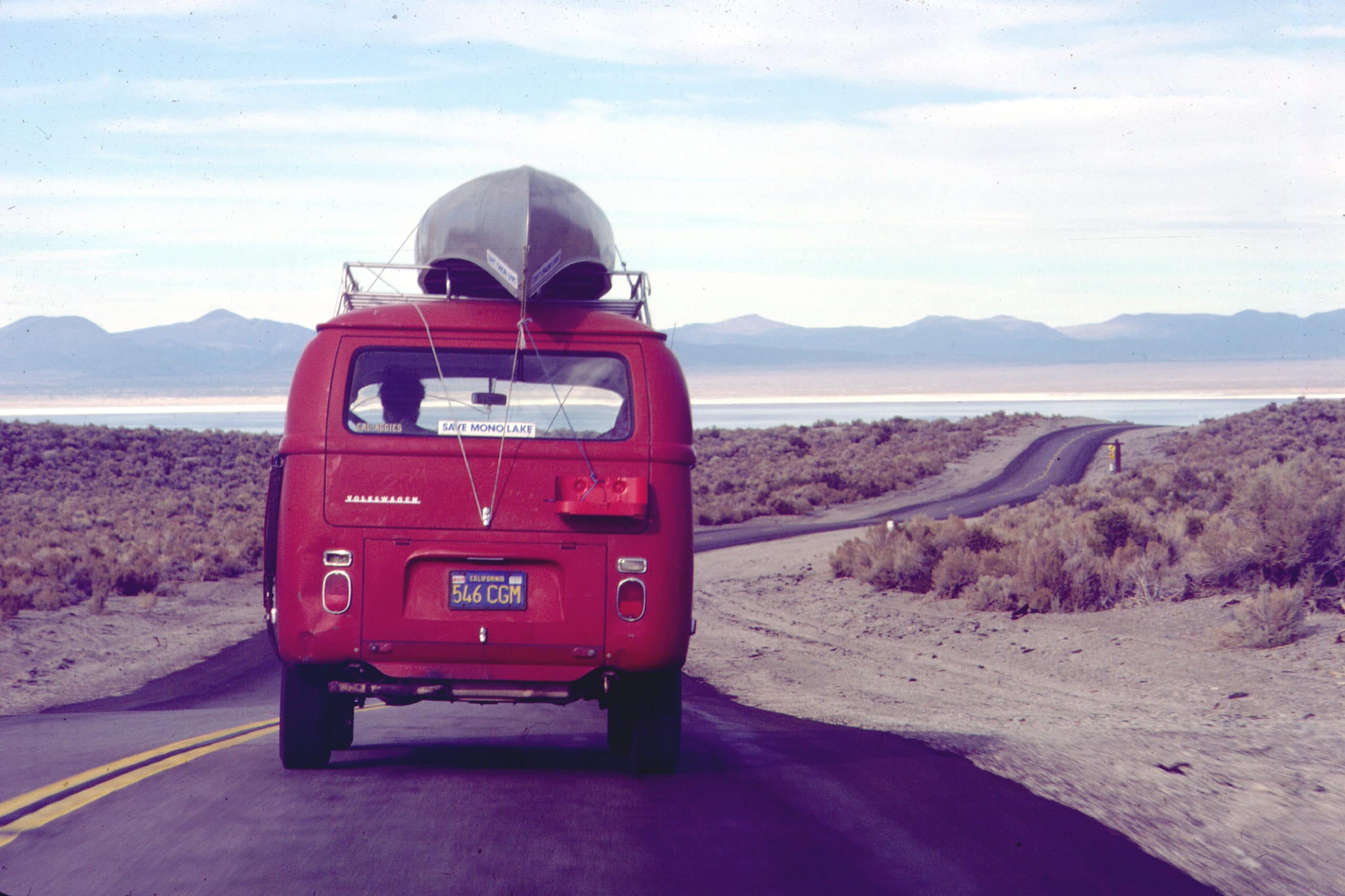
Key parts of Mono Lake’s protection and restoration
While the Mono Lake Committee and our 16,000 members work to protect Mono Lake every day, there are three key building blocks to its legal protection.
related resources: Public Trust doctrine | Decision 1631 | Mono Basin Stream Restoration Agreement
Watch The Mono Lake Story film
Learn more about the natural and political history of Mono Lake.
Email updates from Mono Lake
Sign up to get the latest news from Mono Lake.
Join the Mono Lake Committee
Help protect Mono Lake for future generations by becoming a member.
Top photo by Don Jackson.
